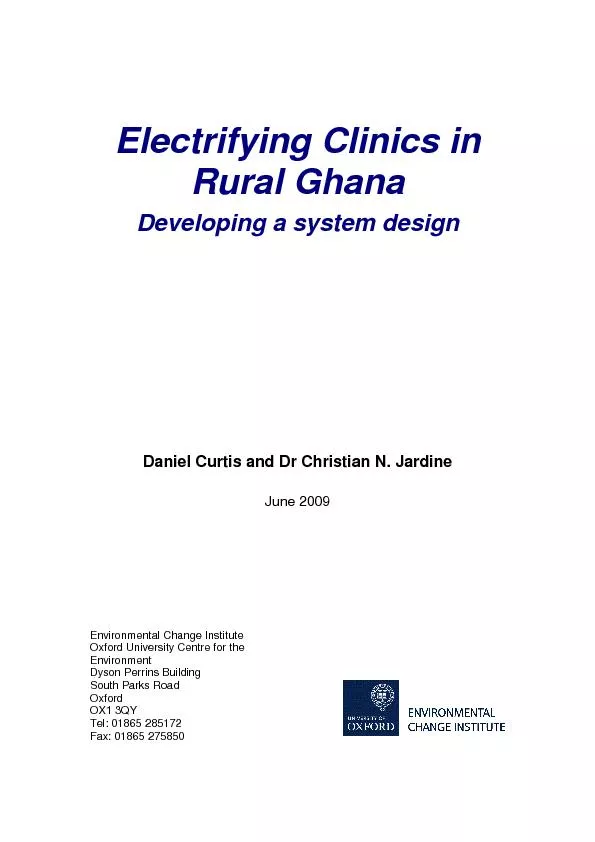PDF-Electrifying Clinics in Rural Ghana Developing a system design ...
Author : lindy-dunigan | Published Date : 2016-05-31
Daniel Curtis and Dr Christian N Jardine June 2009 Environmental Change Institute Oxford University Centre for the Environment Dyson Perrins Building South Parks
Presentation Embed Code
Download Presentation
Download Presentation The PPT/PDF document "Electrifying Clinics in Rural Ghana Deve..." is the property of its rightful owner. Permission is granted to download and print the materials on this website for personal, non-commercial use only, and to display it on your personal computer provided you do not modify the materials and that you retain all copyright notices contained in the materials. By downloading content from our website, you accept the terms of this agreement.
Electrifying Clinics in Rural Ghana Developing a system design ...: Transcript
Download Rules Of Document
"Electrifying Clinics in Rural Ghana Developing a system design
..."The content belongs to its owner. You may download and print it for personal use, without modification, and keep all copyright notices. By downloading, you agree to these terms.
Related Documents














